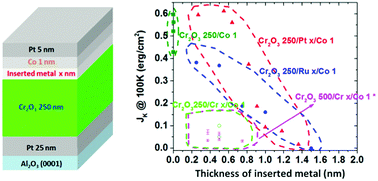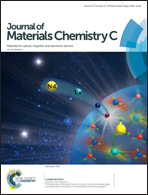Inserted metals for low-energy magnetoelectric switching in a Cr2O3/ferromagnet interfacial exchange-biased thin film system
Abstract
An inserted metal (IM) layer (such as Pt, Ru, or Cr) is typically fabricated between Cr2O3 and the ferromagnet in magnetoelectric switched antiferromagnet/ferromagnet exchange-biased thin film systems. The IM layer is used as a “spacer layer” to prevent oxidization of Co and enhance the blocking temperature. In this work, we found that the magnetic properties of these thin film systems vary depending on the type of IM, and they could be reproduced by bilayers or multilayers of Co and IM thin films. We also found that the IM layer was spin-polarized by the Co ferromagnetic layer based on X-ray magnetic circular dichroism data. These results suggest that the IM does not work separately as a “spacer layer”, but rather it is an integral component of Co-based stacked ferromagnetic films in magnetoelectric switched Cr2O3/ferromagnet exchange-biased systems. Furthermore, we found that some stacked ferromagnetic films easily exhibit a low unidirectional anisotropy energy (Jk), which may be a good way to decrease the magnetoelectric switching energy of antiferromagnets for practical device applications.

- This article is part of the themed collection: Industry R&D collection


 Please wait while we load your content...
Please wait while we load your content...